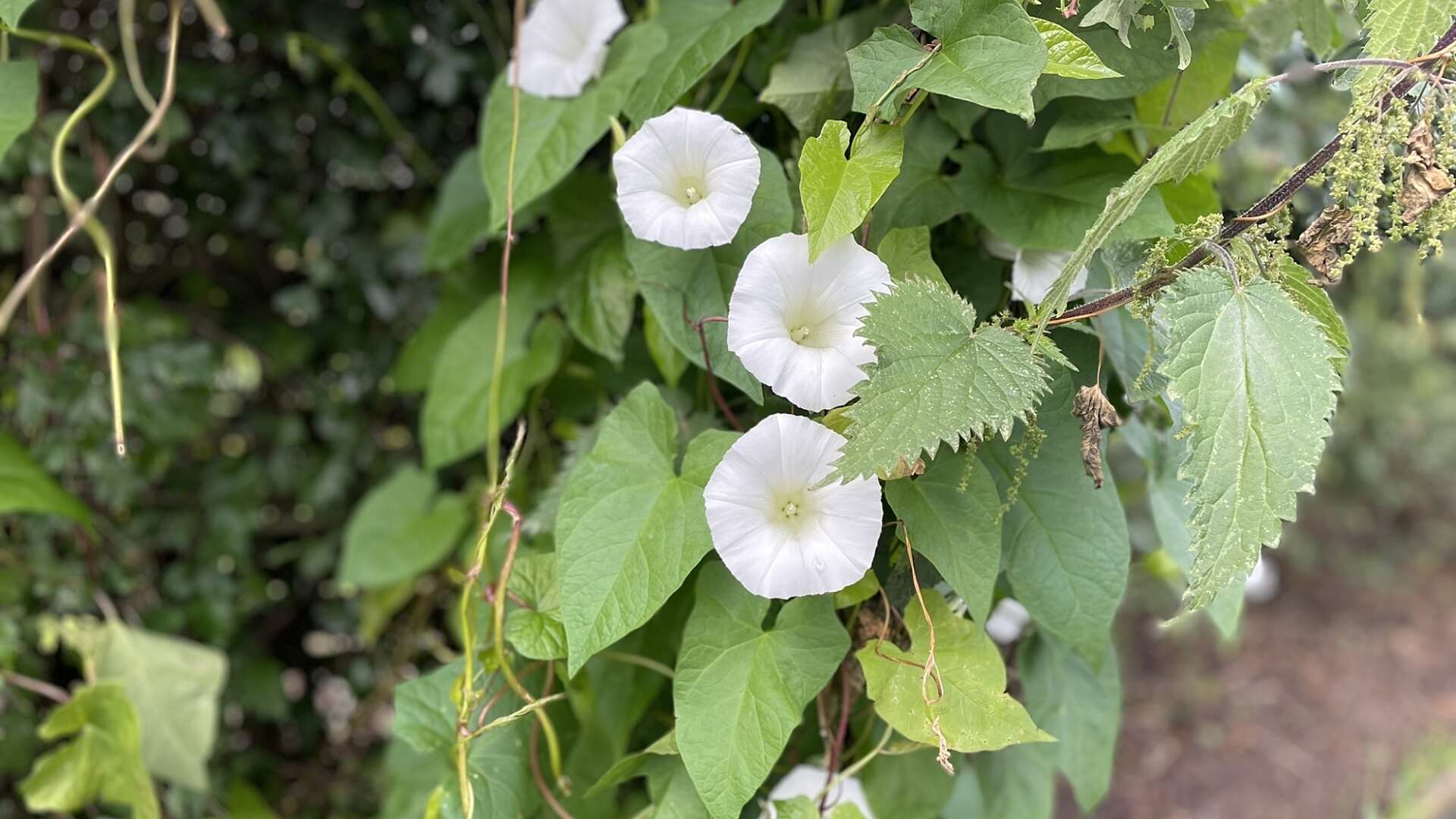Hedge bindweed

Other names
bearbine, greater bindweed, larger bindweed, ropewind, withywind
Latin names
Calystegia sepium (L.) R.Br. (Convolvulus sepium L.)
Weed Type
Perennial Broad-leaved Weeds
Where would I find Hedge bindweed?
Three subspecies are recognised in Britain. Subspecies sepium is widespread and native in hedges, the edge of woods and in gardens. Subspecies roseata occurs locally near the coast and ssp. spectabilis was formerly naturalised at one site in Wales. Two closely related species, previously regarded as subspecies also occur in Britain. Large bindweed (C. sylvatica) was introduced but is now widely naturalised in hedges and waste places. Hairy bindweed (C. pulchra) was also introduced but is less common.
The plant exudes a milky sap if damaged. Hedge bindweed has medicinal uses as a laxative.
Biology
Hedge bindweed flowers from June to October. The flowers are insect pollinated, self-incompatible and produce few seeds. Seed is set from September to October. The seed is contained in a dehiscent 4-seeded capsule.
Seeds will germinate in the autumn and in spring. Seedlings grow roots that extend rapidly within a few weeks of germination. The roots run deeply and spread in all directions. The rootstocks are often tuberous. The aerial shoots die down in autumn and the plant overwinters as rhizomes in the soil.
Does Hedge bindweed spread easily?
Seeds can retain viability for at least 39 years when buried in soil. Seed sown at 20, 55 and 105 cm gave 41, 51 and 43% germination respectively after 10 years, 20, 43 and 51% at 30 years and --, 34 and 53% at 39 years.
Vegetative spread is by a network of rhizomes. The rhizomes are far creeping but seldom more than 30 cm deep. Stems that lay on the ground act as stolons that enter the soil and root at their tips. These aerial runners can grow 3-4 m in length. Shoots can develop from fragments of root, rhizome or stem.
The seeds can be carried by water. Vegetative fragments of the weed are often dumped with garden waste. New plants can develop from pieces of root, rhizome or stem.
How to manage Hedge bindweed organically
It is advisable to fork out and remove all pieces of rootstock and rhizomes before collecting and burning them. A minimum of 48 hrs desiccation is needed to reduce the regenerative capacity of rhizome fragments. Food reserves in the vegetative organs can be exhausted by frequent hoeing. Mechanical control is most effective when shoots are 38 to 50 cm long. Burial to at least 25 cm is needed to reduce regrowth. Shorter rhizome fragments take longer to emerge above ground. In some situations, mechanical cultivation is not possible and hand-weeding is the only option. Seeding should be prevented.
A ground cover of common chickweed (Stellaria media) has been used to suppress hedge bindweed in vineyards.
In North America, biological control studies have been made with the Argus tortoise beetle (Cheiymorpha cassidae) and its larvae. Applications of spores of the fungus Staganospora spp. in combination with a competitive cover crop have also been evaluated.